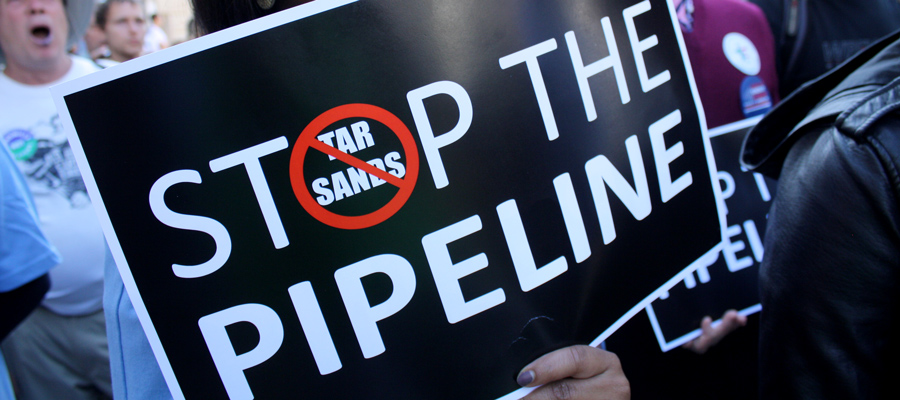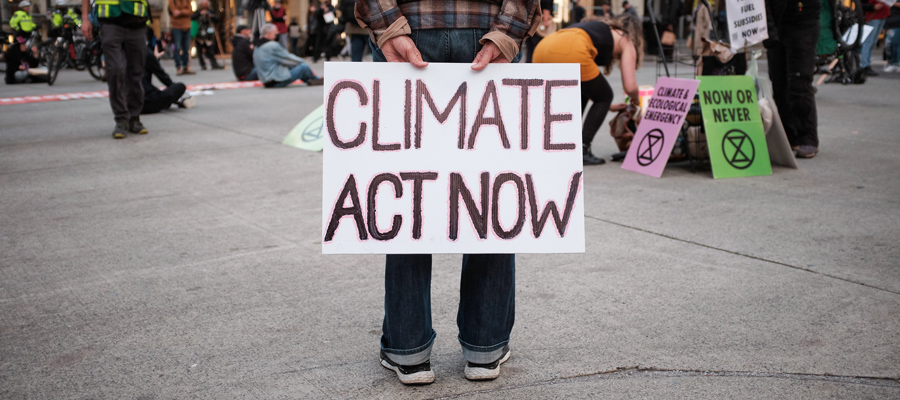Production forecasts, pipelines and net-zero promises: Canada’s recipe for climate failure

Canada launched Bill C-12 last month, a transparency and accountability act designed to achieve “net-zero” emissions by 2050. The government has also pledged to increase the planned 30 per cent emissions reductions by 2030 it committed to under the 2015 Paris Agreement even though as of 2018, the latest year for which data are available, emissions were down only 0.14 per cent from 2005 levels.
Given the government’s performance to date, committing to net-zero emissions by 2050 represents a daunting challenge. Meeting the Paris Agreement target by 2030 would require a 3.5 per cent per year reduction. Meeting even an 80 per cent reduction target by 2050 would require a 6.1 per cent annual reduction from 2030 to 2050 (assuming Canada could use carbon sequestration to achieve the last 20 per cent to net zero). In fact, Canada has already plucked the low hanging fruit of emissions reduction by converting from coal to gas in the electricity sector—most other sectors of the economy have increased emissions substantially since 2005.
Both scenarios would see emissions from oil and gas production alone far exceed even an 80 per cent reduction target by 2050.
A few days after Bill C-12 was introduced, the Canada Energy Regulator (CER) released its annual “Energy Futures” oil and gas production forecasts to 2050. This incarnation included two scenarios: a “reference case” that assumed Canada does nothing further to reduce emissions beyond current policies; and an “evolving case” which assumed additional measures will be taken to meet the government’s “net-zero” emissions reduction target.
Both scenarios would see emissions from oil and gas production alone far exceed even an 80 per cent reduction target by 2050. Under the reference case, which assumes no further improvement in oil sands emissions and no legislated oil sands emissions cap, oil and gas production emissions would exceed this target by 106 per cent in 2050. In the evolving case, which assumes oil sands emission reductions from 2018 levels of 28 per cent per barrel for in situ production, 18 per cent for mining and 31 per cent for mining and upgrading, oil and gas production emissions would exceed this target by 38 per cent in 2050. And both scenarios assume all other sectors of the Canadian economy would reduce emissions to zero by then.
Clearly both CER scenarios are at odds with Bill C-12. The reference scenario has little credibility as the Canadian government will have to announce significant new policies if it is to have a hope of meeting its emissions reduction targets. The evolving scenario, which assumes new policies will be enacted, is slightly more credible but is still hopelessly optimistic on increasing oil and gas production given the emissions implications.
This has significant implications for two other government priorities—its support for the Trans Mountain pipeline expansion and the Keystone XL pipeline.
Even with the CER’s evolving scenario, neither of these projects are needed as has been widely reported in the media. Completion of the Enbridge Line 3 expansion project in 2021, coupled with announced expansions to existing pipelines, will create surplus export capacity without using rail. Moreover, the government’s justification for building the Trans Mountain expansion to capture higher prices in Asia has been shown to be false.
Canada has already plucked the low hanging fruit of emissions reduction by converting from coal to gas in the electricity sector—most other sectors of the economy have increased emissions substantially since 2005.
The federal government spent $4.5 billion to acquire the Trans Mountain project and plans to spend a further $12.6 billion on its expansion. The Kenney government in Alberta has committed US$1.1 billion in equity to build Keystone XL and guaranteed a US$4.2-billion loan.
Spending $20 billion or more on unneeded pipeline projects while claiming emissions reduction commitments will be met is a rhetorical exercise right out of George Orwell’s 1984.
Canada’s carbon conundrum is a daunting problem. Although government has at least said it will do something about reducing emissions its actions speak louder than words. The CER’s latest forecast, even with the “evolving case” scenario, points to the hopelessness of current plans without recognizing the true scale of the problem. Oil and gas production will clearly have to decline further, creating even more space on existing export pipelines without building new ones.
Canada urgently needs a viable energy strategy to ensure the future energy security of Canadians and meet its emissions reduction commitments.
Topics: Climate change & energy policy


